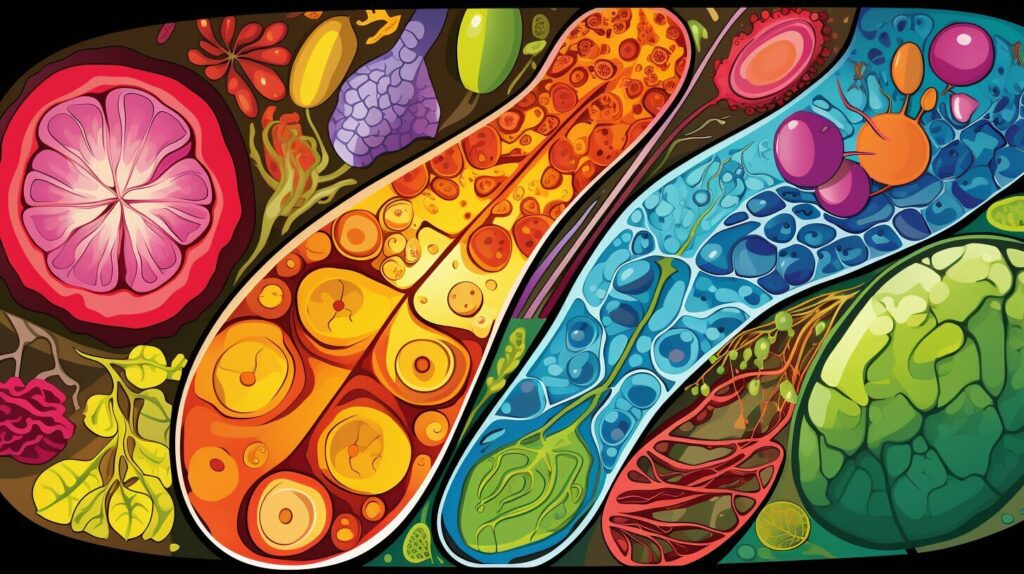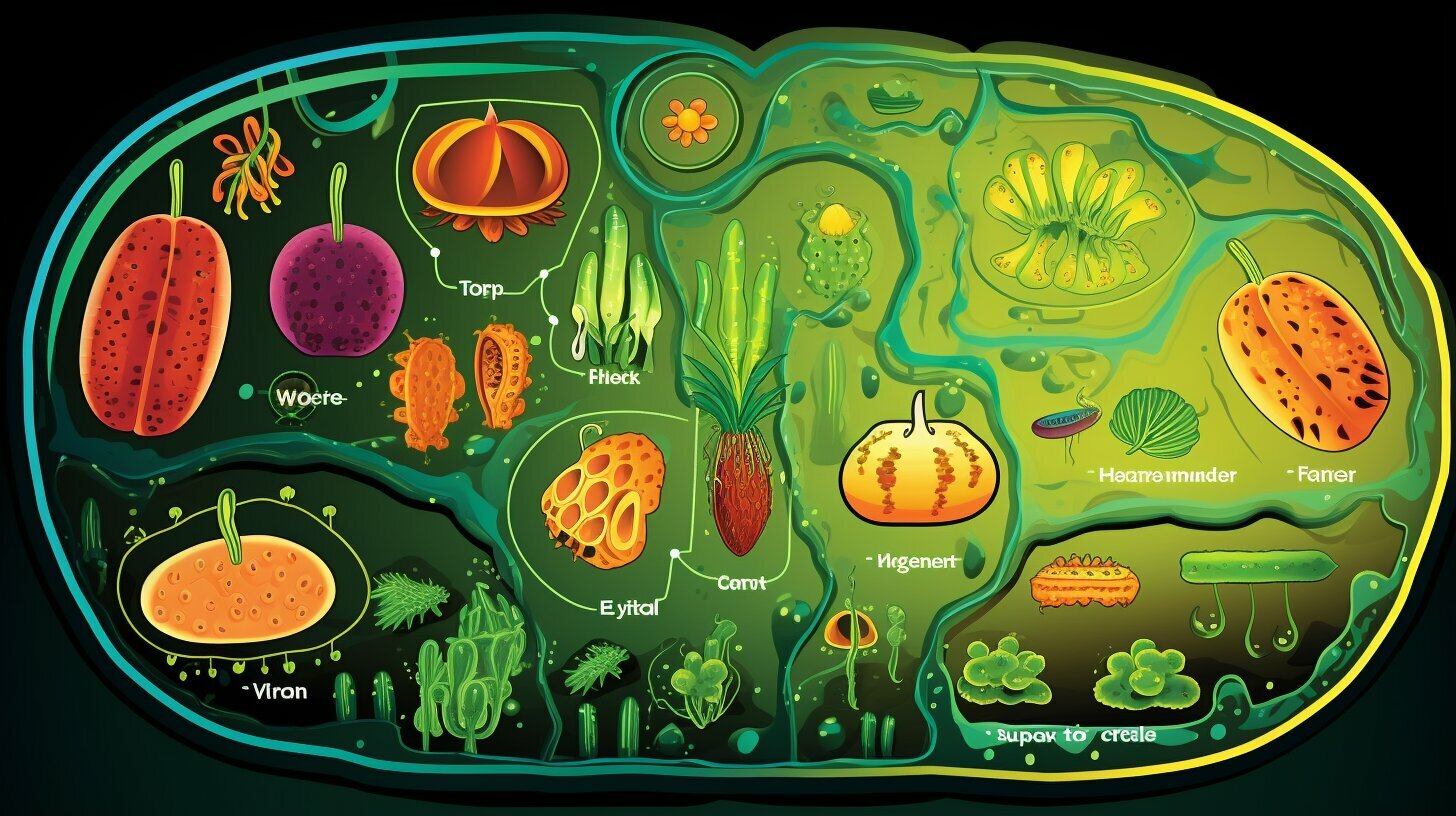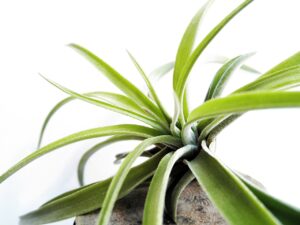Greetings! I often find myself drawn to the mysteries of the natural world. Today, we’ll explore a fascinating question that has puzzled many curious minds: are plants multicellular?
Before we dive into this topic, let’s take a step back and review the basic structure of plant cells. Plant cells have a cell wall, a large central vacuole, and chloroplasts that help with photosynthesis. Multicellularity refers to organisms that are composed of multiple cells, each with a specific function for the survival and growth of the organism.
Now, let’s get back to the central question: Are plants multicellular? The answer is yes! Most plants are multicellular organisms, composed of many cells that work together to carry out essential functions and support the plant’s growth and survival.
- Plant cells have a cell wall, central vacuole, and chloroplasts.
- Plants are considered multicellular organisms.
- Multicellularity allows cells to perform specialized functions for the survival and growth of the organism.
Understanding Plant Cell Organization and Function
Plant cells are unique in their structure and organization, possessing characteristics that differentiate them from other types of cells. The study of plant cell organization is crucial to understanding the importance of multicellularity in plants.
Each plant cell has several key components, including the cell wall, which provides structural support, and the chloroplasts, which are responsible for photosynthesis. In addition, plant cells have a large central vacuole that stores water and nutrients, providing a structure that maintains cell turgor pressure and supports the cell.
The importance of multicellularity in plants is reflected in the way plant cells are organized into tissues and organs, allowing plants to carry out specialized functions necessary for their survival. For example, the root system is responsible for absorbing nutrients and water from the soil, while the leaves are responsible for capturing sunlight in photosynthesis.

The organization of plant cells into specialized tissues and organs allows plants to adapt to their environment and thrive in diverse ecological niches. The characteristics of plant cells, such as their unique cell walls and chloroplasts, enable them to perform specialized functions necessary for survival.
Overall, understanding plant cell organization and function is crucial to understanding the processes and mechanisms that allow plants to grow, reproduce, and adapt to their environment. The unique characteristics of plant cells and the importance of multicellularity in plants make them fascinating organisms to study.
Exploring Plant Tissue Systems and Differentiation
Now that we understand the organization and structure of plant cells, it’s time to dive deeper. Plants are composed of different tissue systems, each with a unique function that contributes to the overall survival of the organism. The three main tissue systems in plants are the dermal tissue system, ground tissue system, and vascular tissue system.

The dermal tissue system is the outermost layer of cells that covers the surface of the plant and protects it from external factors. The ground tissue system is responsible for the storage of nutrients and provides support to the plant. The vascular tissue system, on the other hand, plays an essential role in the transport of water and nutrients throughout the plant.
Plant cell differentiation is a crucial process that allows cells to specialize and perform specific functions. Stem cells in plants have the potential to differentiate into any type of plant cell. During differentiation, cells undergo structural and functional changes to adopt a specific role in the plant’s tissue system.
For example, a mesophyll cell in leaves is specialized for photosynthesis and contains specialized chloroplasts. Similarly, root hair cells have long extensions and a large surface area that increases their ability to absorb water and minerals from the soil.
The ability of plant cells to differentiate into specialized cells with specific functions is critical to plant survival and growth. Without differentiation, plants would not be able to carry out the various processes necessary for their survival. Understanding plant tissue systems and cell differentiation is vital in the study of botany and allows us to appreciate the true complexity of these incredible multicellular organisms.
The Function and Specialization of Plant Cells
Now that we understand the organization and characteristics of plant cells, let’s explore the various functions performed by specialized plant cells.
First, let’s talk about the epidermis, a specialized tissue that covers the surface of leaves, stems, and roots. The epidermis helps regulate gas exchange and water loss in plants. In addition, it secretes a waxy substance called cuticle that protects the plant from harmful pathogens and excessive water loss.
Another essential type of cell is the mesophyll cell, found in the interior of leaves. These cells contain chloroplasts that carry out photosynthesis, converting light energy into chemical energy that the plant can use for growth and development. Chloroplasts are unique organelles found only in plant cells, and their presence is what makes plants capable of producing their food.
Root hairs are also specialized plant cells that help absorb water and nutrients from the soil. These thin, elongated cells vastly increase the surface area of roots, enabling them to absorb more water and nutrients and help the plant grow healthier and stronger.
The xylem and phloem are two types of plant tissues responsible for transporting water, nutrients, and sugars throughout the plant. Xylem cells transport water and minerals from the roots to the rest of the plant, while phloem cells transport sugars and other organic molecules from the leaves to other parts of the plant.
Finally, let’s talk about the sexual reproductive cells in plants – the egg cell and sperm cell. These specialized cells fuse during fertilization, giving rise to a young plant that will grow into a mature plant over time. Without the specialized functions of these cells, plants would not be able to reproduce and continue their species.

As we can see, different types of plant cells have specialized roles that are vital for the plant’s survival and growth. Multicellularity allows plants to carry out various functions necessary for their well-being and adapt to their environment. Understanding the function and specialization of plant cells gives us a better appreciation for the complexity and resilience of plant life.
Conclusion
In conclusion, plants are indeed multicellular organisms and their cell structure and organization are crucial for their survival. Through our exploration of plant cell differentiation, tissue systems, and cell specialization, we have gained a deeper understanding of the intricate mechanisms that allow plants to thrive in their natural environment.
The characteristics of plant cells, such as their cell walls, chloroplasts, and large central vacuoles, set them apart from animal cells and allow them to perform specialized functions necessary for their growth and survival. The various tissue systems found in plants, such as the vascular system and the epidermis, work together to transport nutrients and water throughout the plant and provide protection from external factors.
Through the process of cell differentiation, plant cells become specialized to perform specific functions, such as photosynthesis, nutrient absorption, and reproduction. These specialized cells work together to ensure the survival and growth of the plant.
By understanding the intricacies of plant biology and their cell systems, we can better appreciate the complexity and resilience of these remarkable organisms. So, yes, plants are multicellular, and their ability to adapt and thrive is owed to their intricate cell systems and the specialized functions of their different cell types.
FAQ
Q: Are plants multicellular?
A: Yes, plants are multicellular organisms.
Q: What is the structure of plant cells?
A: Plant cells have a cell wall, cell membrane, cytoplasm, nucleus, and various organelles.
Q: Why is multicellularity important for plants?
A: Multicellularity allows plants to carry out specialized functions such as photosynthesis, nutrient absorption, and reproduction.
Q: What are plant tissue systems?
A: Plant tissue systems are groups of cells that work together to perform specific functions in a plant, such as transport, support, and storage.
Q: How do plant cells differentiate?
A: Plant cells differentiate through a process called cell differentiation, where they become specialized and take on specific roles within the plant.
Q: What are the functions of specialized plant cells?
A: Specialized plant cells have various functions, including photosynthesis in leaf cells, nutrient absorption in root cells, and reproduction in reproductive cells.
Q: Are plants complex organisms?
A: Yes, plants are complex organisms that rely on cellular organization and specialized functions to survive and thrive.




